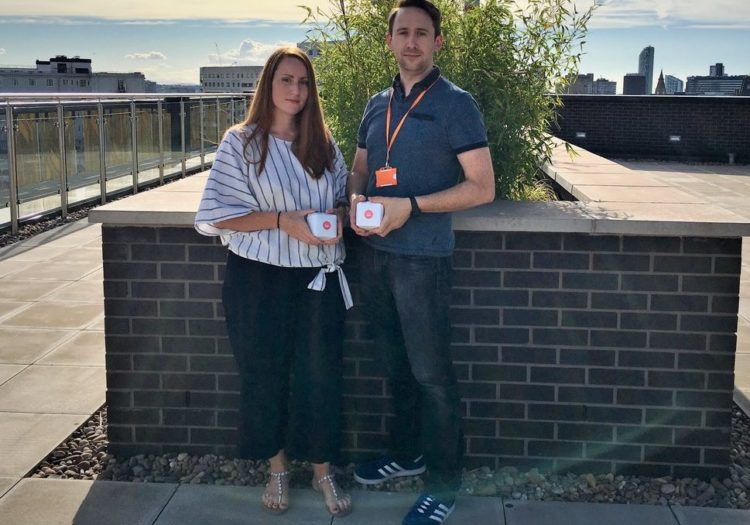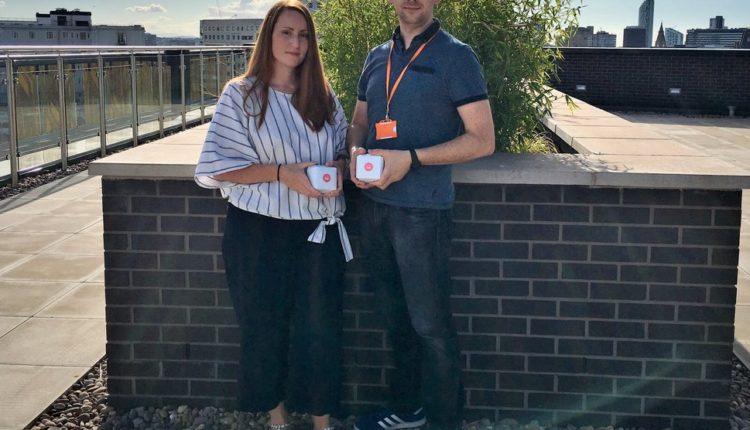Engineers looking to roll-out hi-tech device to combat loneliness
Husband and wife team Jen and Pat Fenner, of DefProc, developed ‘Push to Talk’ in 2014 and now believe it could prove invaluable during the coronavirus lockdown. Ruth Hartnoll reports

A UK-wide lockdown and strict social distancing introduced to stop the spread of the coronavirus has the the knock-on effect of increased feelings of loneliness and isolation.
Now a Liverpool engineering firm is offering a high-tech solution to the problem. Husband and wife team Jen and Pat Fenner, of DefProc, originally invented their ‘Push to Talk’ device to connect people in communities who struggle to socialise, like unpaid family carers and the elderly.
However, the COVID-19 lockdown has left millions of people isolated and the pair are appealing for help from manufacturers to help them scale production of their Push to Talk invention to help reach those most in need.
Jen, who is DefProc’s managing director, said: “Nobody could have predicted the UK-wide lockdown that has left millions of vulnerable people isolated and lonely. We feel that Push to Talk could make a huge difference to people’s lives everywhere.”
Push to Talk was first developed in 2014 as part of a Health and Social Care hack-day arranged for Liverpool City Council. One of the themes was social isolation and loneliness in the elderly population.
It has been through various iterations and even went on to win a small Innovate UK grant to conduct a small trial. In 2018, Push to Talk was identified as a use case that could be adapted to suit the Liverpool Health and Social Care 5G Testbed.
The purpose of the testbed was to look at how 5G can solve some of the problems facing Health and Social Care and could the use of newly available technology help. The testbed area was Kensington and Fairfield. This area was chosen as it has the lowest rate of connectivity in the city and is one of the most deprived. Many people in the area did not have broadband and Push to Talk provided a vital communication outlet.
It was then redeveloped to utilise a new technology called LoRaWAN, which stands for Long Range Wide Area Network. LoRaWAN is a network that consists of gateways mounted on buildings, they can receive a small amount of data over a long range radio signal from devices up to 2km away. This technology allows for small amounts of data to be sent from a device to the internet without Bluetooth, mobile data, Wi-Fi or broadband.
The device is a similar size to a small alarm clock. It is ergonomically designed so that people with dexterity issues do not face a barrier to using the service.
Push to Talk is free to users, it is designed as a referral service so that local authorities and charities can refer people they think will benefit from it. To have access to the service, people just need a working phone line. Alongside the device, DefProc, which is based at Sensor City, has developed a smartphone app. This is how local authorities and charities can refer people to Push to Talk.
“We’ve been working on Push to Talk for five years but the problem we were setting out to alleviate is now a hundred times bigger because of COVID-19 so we’ve decided to put the effort of the business into rolling this service out,” added Jen.
To make Push to Talk available at a national-level, DefProc is looking for a manufacturer that can produce enough devices to cover those that have been identified as requiring shielding. DefProc can produce around 40 buttons a week.

